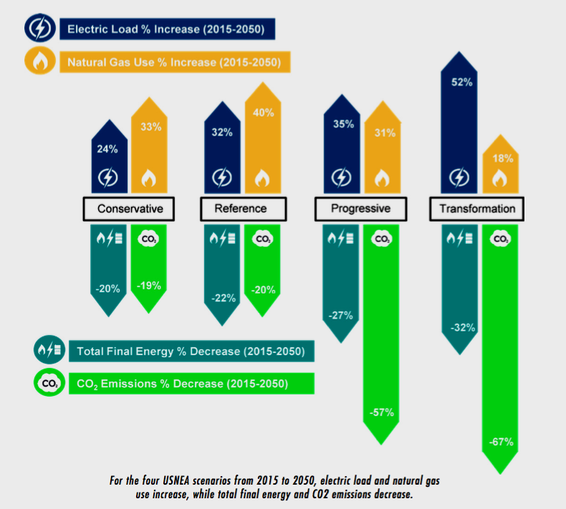
by Jill Cliburn
A year ago, CSVP held a Utility Forum Workshop in Golden, Colorado, where we talked about clean electrification—using electric devices, equipment and vehicles as a “sink and source” for energy to help balance renewables on the utility grid. The idea was a good fit for CSVP, as co-marketing such products with community solar increases the chance to have a win-win conversation with customers. Most customers are already interested in solar, but they may never have thought about the need to balance the grid. Our Workshop in Golden was a memorable introduction for dozens of utilities and stakeholders in attendance.
But a year later? Holy cow! The idea of clean electrification has taken off in utility talking circles, and there is a great deal of research going on to attack the technical details. For one example, you can catch John Powers and myself, with a dozen other thought leaders on the Clean Electrification Track at the American Solar Energy Society (ASES) Solar 2018 Conference in Boulder, August 6-8. Seriously, you should come—but here’s a preview.
The standard crystal ball for clean electrification is provided by EPRI. Its latest assessment, released in April 2018, looks out to 2050, anticipating growth in electricity’s share of total final energy use, from 21% today to between 32 and 47% in 2050. Four scenarios take different views of electricity sector growth, including electric vehicles, commercial and industrial technologies, and a tremendous shift in residential energy use. The most optimistic EPRI scenario would drive a decrease in U.S. carbon emissions by almost 70% by 2050.
While EPRI predicts greater use of natural gas in a clean electrification future, other researchers, as well as activist cities, see advanced "solar-plus" integration strategies and customer involvement as ways to push for even greater emissions reductions.
But even EPRI’s most aggressive scenario is not as impressive as some promoted by cities that are aiming to be “100% renewable” by 2050. Most of these cities have signed on to organized programs, such as Sierra Club’s Ready for 100 Campaign and the Mayors for 100% Clean Energy Campaign or the foundation-funded, international Renewable Cities program. For example, Vancouver, BC, already gets 98% of its electricity from renewable sources—mostly hydro with some wind and biomass – and just 2% from gas. Cities like Boulder are pushing hard for fuel-switching to get customers off natural gas for heating and cooling and aggressively promoting electrified transportation, along with solar and energy efficiency. (Note, Boulder is also on the program at Solar 2018.) The Sierra Club counts at least 65 U.S. cities committed to a 100% renewable energy goal.
Utilities are right to worry about this grassroots drive for high-penetration renewables. The Community Choice Aggregation (CCA) movement has cities in at least seven states (CA, IL, OH, MA, NJ, NY and RI) choosing wholesale energy contracts—and mostly green energy contracts—on behalf of their citizens. This creates more bottom-up pressure for renewables in the wholesale energy market, and that in turn creates greater urgency to get grid integration for renewables right.
This is a clear case of a threat that is also an opportunity. If utilities rise to the challenge of clean electrification, including increasing use of wholesale and locally-produced solar, then this could be a cure for the looming decline of the utility industry. The Brattle Group, which produced some seminal work in this field, has a new report that foresees electric utility sales growth rising to 2% per year on average, more than three times the current projections of annual growth rates of less than 0.6%, or essentially zip, per year.
At first this forecast may call to mind an image of the utility as the “old man,” called back into the game. But that is not the case. Utilities—and especially local distribution utilities—will only get into this game if they engage actively and well with their customers. That is, because their customers also happen to be voters, who can influence related policies and research. For me, with more than three years of CSVP work at my back, I’m more enthusiastic than ever about the ability of community solar to open this conversatoin with customers.
In fact, I’m heading to Grand Rapids, Minnesota, this month, to work with a group of smart and creative customers and their (also pretty darned sharp) municipal utility leaders on a high-value community solar program plan. I’m excited to see this and more examples of utilities and customers working together to ask the hard questions about, How do we maximize use of renewable energy? And, How do we bring other technologies on both sides of the meter, into the puzzle, to ease and speed this dramatic transition?
At risk of repeating myself, let me shamelessly pitch ASES Solar 2018 again, where I’ve been working with John Powers, the City of Boulder, NREL folks, and many third-party technology and service providers, to produce panels on clean electrification and community solar, which constitute an affordable mini-conference of their own on Monday, August 6.

